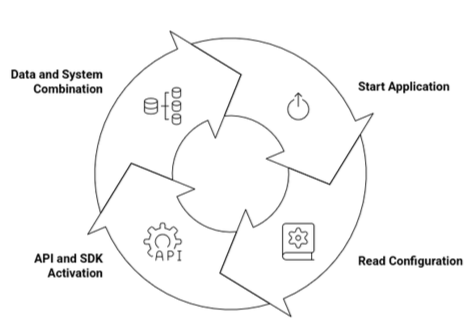Do you know about OTel Auto-Instrumentation? If not, this article is for you. Our Server Management team is ready to assist.
OTel Auto-Instrumentation
Automatic instrumentation in Java is referred to as the process of adding code into a running Java application to collect telemetry data from many popular libraries and frameworks. OTel Auto Instrumentation with Java offers an optimized approach to telemetry data. Keep on reading the article to know about OTel Auto-Instrumentation.
How Does Automatic Integration Work?
Automatic integration works in multiple steps of combining data and systems employing technology to handle certain tasks. Upon starting the application, the JAVA agent reads configuration settings provided via environment variables or system properties. Post configuration, the API and SDK work automatically

Facing “package org.apache.commons.lang does not exist” error while setting up OTel auto instrumentation? Find out how our experts fix it.
OpenTelemetry Instrumentation Repositories
Various repositories operate on multiple platforms, like GitHub. The purpose of the repositories is to offer pre-built libraries and agents that authorize the collection of telemetry data from applications and services.
- Core repository (API & SDK): Includes opentelemetry-go, opentelemetry-python, opentelemetry-js, and opentelemetry-java. This official OpenTelemetry is used for the Go, Python, JavaScript, and Java languages of the OpenTelemetry API and SDK.
- Instrumentation repository (Contrib & Automatic): Includes opentelemetry-go-contrib, opentelemetry-js-contrib, opentelemetry-java-instrumentation, opentelemetry-dotnet-instrumentation, and opentelemetry-python-contrib.
- Other repositories: Includes opentelemetry-demo, opentelemetry-ebpf-profiler, and opentelemetry-proto-go.
All the mentioned OpenTelemetry has particle features and applications.
How to Find the Right Repository
Choosing a repository depends on the applications and needs. Choose the core repositories if you need the core API and SDK for a specific language. Likewise, the contrib repository is the best choice if you need community-maintained instrumentation or extensions. If your interest is in automatic instrumentation for a specific language, then choose the corresponding automatic instrumentation repository.
Need to know how to resolve KVM Java Duplicate Exists error? Follow our experts’ recommended steps
Recommendations for Using Instrumentation
Dynatrace Recommendation: Rely on automatic instrumentation to the fullest extent and reduce errors. It is user-friendly and can provide a great entry into distributed tracing.
You can choose manual instrumentation, in case there is missing data and surplus customization. Make sure you follow semantic conventions while using manual instrumentation.
Steps to Instrument Automatically
Step 1: Add Dependencies
To enable automatic instrumentation a minimum of one dependency is required; you can even add multiple dependencies. This includes the OpenTelemetry Java Agent along with API, SDK, exporters, and any required instrumentation libraries.
Step 2: Configure OpenTelemetry
Locate configuration using environment variables or system properties. service.name is a minimum configuration required to identify the application. You can also check out other options like exporters, resource attributes, and sampling strategies.
Assume the IP address of the secure Farm is 10.0.0.18; then the redirect URL will be http://10.0.018.
Post configuration, automatic captures, export traces, and metrics are performed by the OpenTelemetry agent. Furthermore, simplifies observability and minimizes the need for manual instrumentation.
[Need assistance with a different issue? Our team is available 24/7.]
Conclusion
In short, OTel Auto-Instrumentation has a broader benefit spectrum than manual instrumentation. Try to stick to automatic instructions as long as possible.
In brief, our Support Experts demonstrated how to fix the “554 5.7.1 : Relay access denied” error.







0 Comments